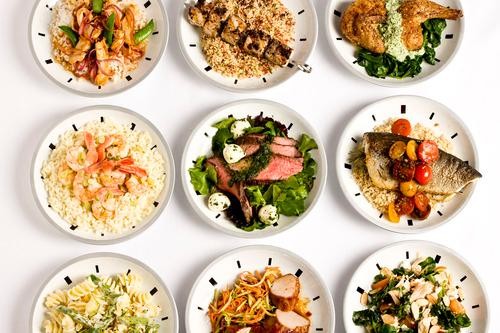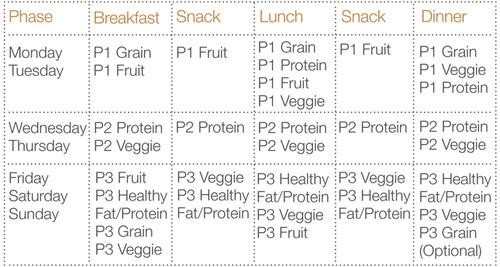Cross-Train Your Diet

How the confuse-it-to-lose-it concept can help rev up your metabolism.
By: Wendy Schmid, Q by Equinox
As comforting as routine can be, doing precisely the same workout day in and day out is a surefire way to stall your progress. And, according to experts, the same can be said of your diet: “Just as the body adapts to the same exercise routine and stops improving, it will adapt to the diet it’s fed,” says nutritionist Haylie Pomroy, author of New York Times best-seller The Fast Metabolism Diet.
To sidestep that dreaded plateau, Pomroy suggests dietary cross-training. “It’s a confuse-it-to-lose-it strategy. You wouldn’t lift heavy in the gym every day, so just as you cycle between periods of burn and rest in fitness, you can cycle different foods to keep your body guessing and rev your metabolism,” she says. “If you eat like this over the course of a month, it helps reverse the biochemical patterns that slowed your metabolism in the first place.”
Below, Pomroy maps out a week of cross-training. Start Phase 1 on a Monday, and then repeat the cycle the following Monday, and be sure to eat every 3 hours—doing so will help stoke your metabolism.
Phase 1: Monday and Tuesday
The Focus: High carb, moderate protein, and low fat
The Foods: Choices rich in vitamins B and C like lean beef, turkey, spinach, lentils, and oatmeal plus brown rice, spelt tortillas, and fruits like oranges, mangos, strawberries, and pineapple. This kick things off by calming your adrenals, which lowers cortisol (excess cortisol slows production of fat-burning thyroid hormones).
Phase 2: Wednesday and Thursday
The Focus: High protein, high veggie, low carb, low fat
The Foods: Alkalizing veggies like kale, collard greens, and arugula, plus lean proteins like bison, chicken, tuna, and cod. These foods help support liver function; your liver filters out toxins and also manufactures the metabolism-stimulating compound L-carnitine, which helps transport food to the mitochondria where it can be converted to energy and burned.
Phase 3: Friday, Saturday, and Sunday
The Focus: Healthy fat, moderate carb and protein
The Foods: Salmon, avocados, nuts, nut butters, and seeds, plus fiber-rich artichokes, cauliflower, asparagus, quinoa, and wild rice, and low-sugar fruits like grapefruit, raspberries, and blueberries. Minimizing fat intake some days and eating a moderate amount other days helps stimulate your body to burn fat.

Photography: Elinor Carucci / Trunk Archive